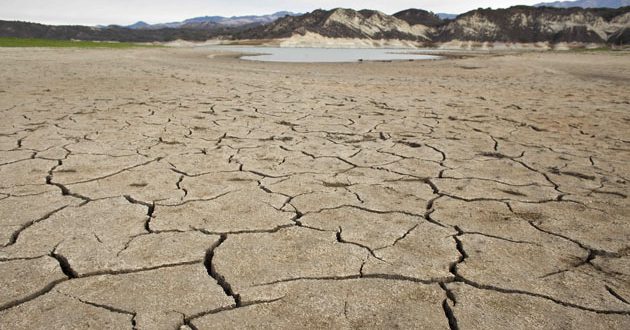A grim new study led by a UCLA geography professor revealed that the current 5-year drought in California could last indefinitely, with the resulting arid conditions becoming “the new normal” for the state.
In the study, researchers looked at how climate contributed to drought and periods of dryness in California, stretching back 10,000 years into prehistoric times. They dug up a 10-foot deep core of sediment taken from the bottom from Kirman Lake in the Sierra Nevada mountains, which is known for its sensitivity to climate fluctuations.
Material in the sample’s layers — such as charcoal deposits that remain from ancient forest fires, fossilized pollen, algae and mollusk shells — enabled them to reconstruct a climate timeline that stretches back 10,000 years.
Historically, natural phenomena such as sun spots, a slightly different earth orbit and a decrease in volcanic activity have intermittently warmed California through a process called radiative forcing. But in modern times, those have been joined by a new force: greenhouse gases generated by the burning of fossil fuels and other human sources.
In a press release, the study’s lead author, UCLA climate expert Glenn McDonald warned that as long as warming forces like greenhouse gases are present, the resulting radiative forcing can extend drought-like conditions more or less indefinitely,
“Radiative forcing in the past appears to have had catastrophic effects in extending droughts,” said McDonald, a distinguished professor of geography, ecology and evolutionary biology at the university. “When you have arid periods that persist for 60 years, as we did in the 12th century, or for millennia, as we did from 6,000 to 1,000 B.C., that’s not really a ‘drought.’ That aridity is the new normal.”
The longest ancient drought in California lasted for nearly 5,000 years, from 6,000 to 1,000 BC. It was triggered by a combination of a slight variation in the Earth’s orbit, which increased the amount of solar energy received in the summer by the Northern Hemisphere, with a long-term La Niña-like state in the Pacific Ocean, which probably reduced precipitation.
Agencies/Canadajournal
 Canada Journal – News of the World Articles and videos to bring you the biggest Canadian news stories from across the country every day
Canada Journal – News of the World Articles and videos to bring you the biggest Canadian news stories from across the country every day



